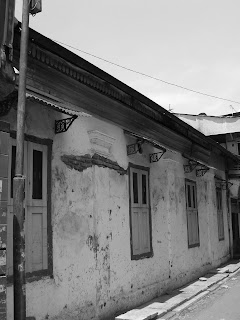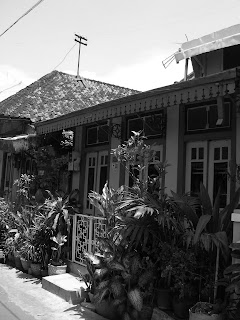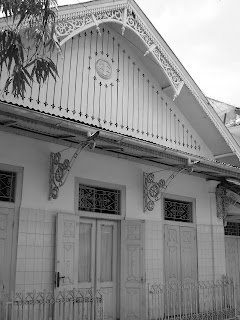Possibly, this building is the second building that prominently visible from mBerok River Bridge after the existence of the former of "Societeit the Harmonie" Building. Obviously, these two buildings are becoming a pair of opening landmark when somebody take a walk from mBerok River Bridge to enter old city conservation area from the east-end side of Pemuda Street.


Seemingly, it looks like an empty building. Except maybe its east-end side part of the building that is partially occupied by a Lawyer Office. From "mBerok" River point of view, the existence of messy street vendor's belongings are become daily distractions that covers the real facade appearance of this building. It is become daily scenery today that the main corner of this building now is just becoming parking area of some 'becak' drivers who are waiting for their passengers. A 'becak' parking area under the empty facade flag pole.........

The entry facade is placed facing to "Societeit the Harmonie" and elaborated with strong vertical masonry louver patterns on its windows. Similar facade details are placed at building west corner-end side and it placed in slightly tilted orientation to facing "mBerok" River Bridge. With reference to an online literary notes, this building have originally identified as De Handelsvereeniging, an office of Trade Association and the Chamber of Commerce.

Seemingly, it looks like an empty building. Except maybe its east-end side part of the building that is partially occupied by a Lawyer Office. From "mBerok" River point of view, the existence of messy street vendor's belongings are become daily distractions that covers the real facade appearance of this building. It is become daily scenery today that the main corner of this building now is just becoming parking area of some 'becak' drivers who are waiting for their passengers. A 'becak' parking area under the empty facade flag pole.........


























